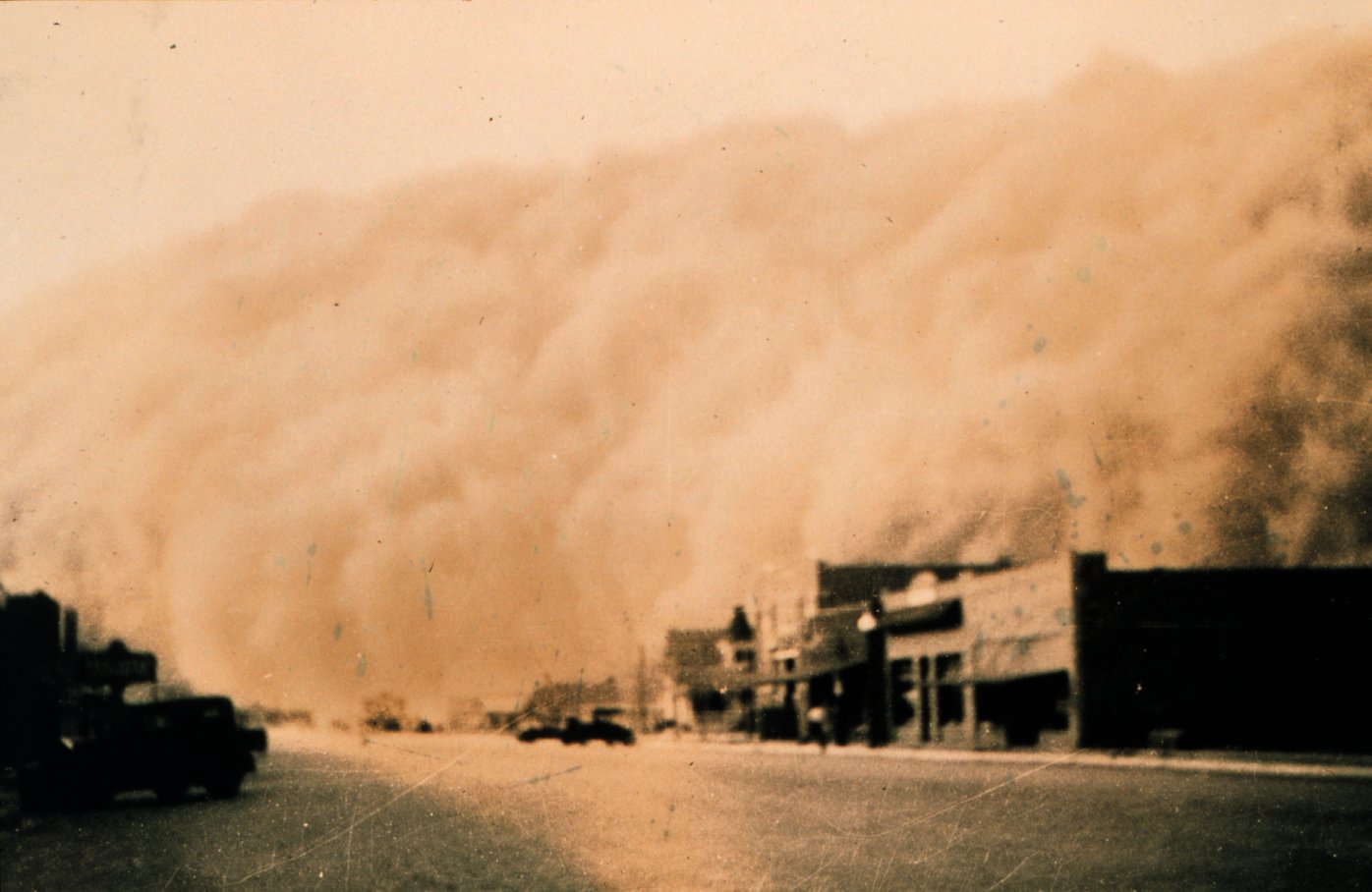In a Twitter age, one where mainstream media desperately needs to keep people watching and reading, every event is magnified. A tropical storm that hit New York City was transformed into a Superstorm and a drought in the West is a harbinger of global warming that will crack the planet.
But nature isn't even having fun with us yet. Things have been much worse plenty of times, and they can be again, and only media coverage will make it seem extreme. The US drought of the 1930s, for example, that was the catalyst for the now legendary Dust Bowl, barely even cracks the Top 10 of a list of droughts analyzed going back to just before Columbus discovered America. And the year he arrived, the most severe drought in the recent geological record was happening. 4 of the worst happened in his lifetime.
It's popular to blame Western civilization for droughts now but in the even more superstitious world of the 15th century, they had better reasons.

Congratulations, Dust Bowl drought, you made it into the Top 10.
Sorry, modern media, your analogies have a long way to go. Dust storm approaching Stratford, Texas in 1936. Image: theb1366, Historic C&GS Collection
Going back to 1429, Brigham Young University professor Matthew Bekker analyzed rings from drought-sensitive tree species. He found several types of scenarios that could make life uncomfortable in what is now the nation's third-fastest-growing state:
- Long droughts: The year 1703 kicked off 16 years in a row with below average stream flow.
- Intense droughts: The Weber River flowed at just 13 percent of normal in 1580 and dropped below 20 percent in three other periods.
- Consecutive worst-case scenarios: The most severe drought in the record began in 1492, and four of the five worst droughts all happened during Christopher Columbus' lifetime.
Modern climate and stream flow records only go back about 100 years in this part of the country, but Mother Nature's own record-keeping was working before then. For this study, Bekker took sample cores from Douglas fir and pinyon pine trees. The thickness of annual growth rings for these species is especially sensitive to water supply.
Using samples from both living and dead trees in the Weber River basin, the researchers built a tree-ring chronology that extends back 585 years into Utah's natural history. Modern stream flow measurements helped them calibrate the correlation between ring thickness and drought severity.
According to the authors, the west's climate usually fluctuates far more than it did in the 1900s. The five previous centuries each saw more years of extremely dry and extremely wet climate conditions.
"We're trying to work with water managers to show the different flavors of droughts this region has had," said Bekker. "These are scenarios you need to build into your models to know how to plan for the future."
Source: Brigham Young University





Comments